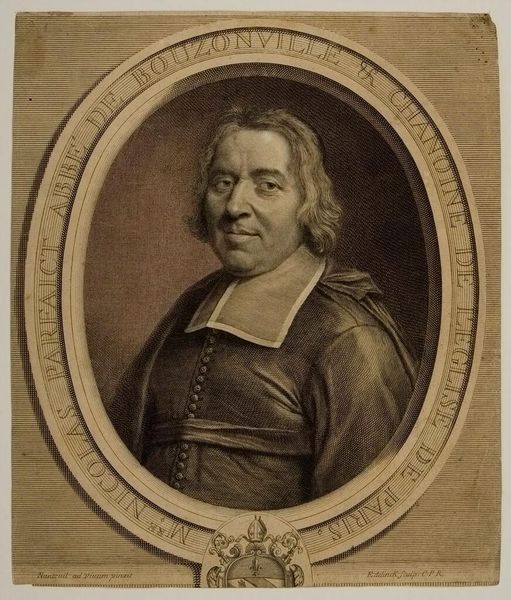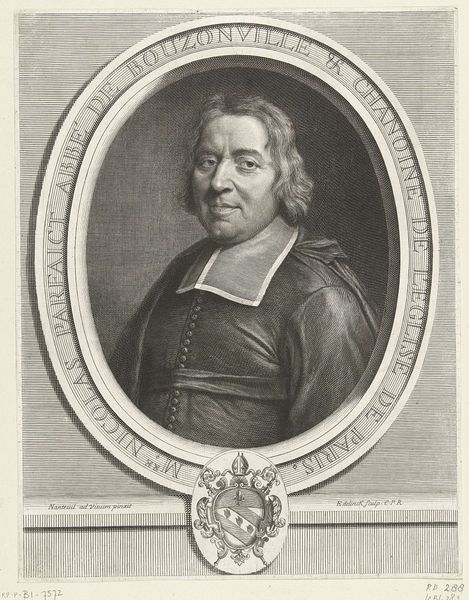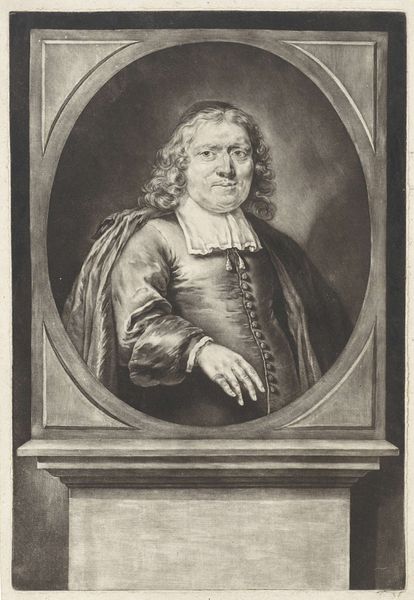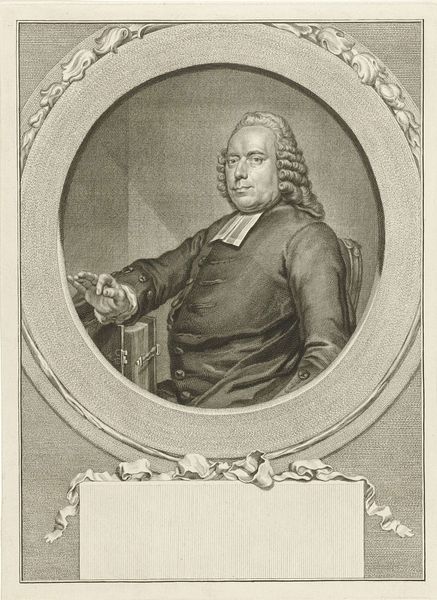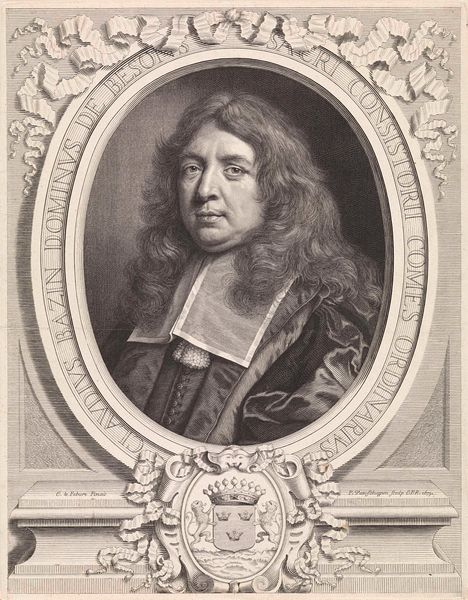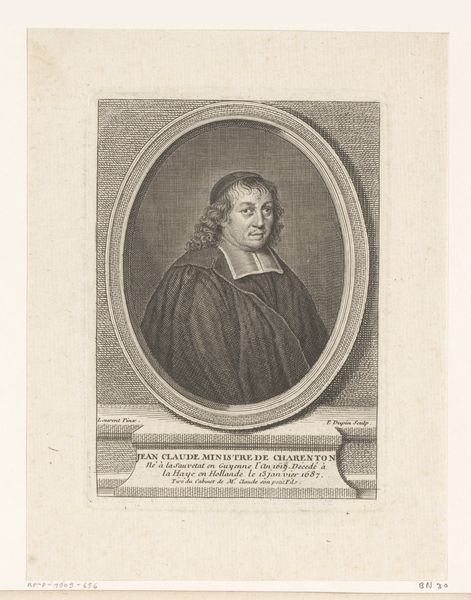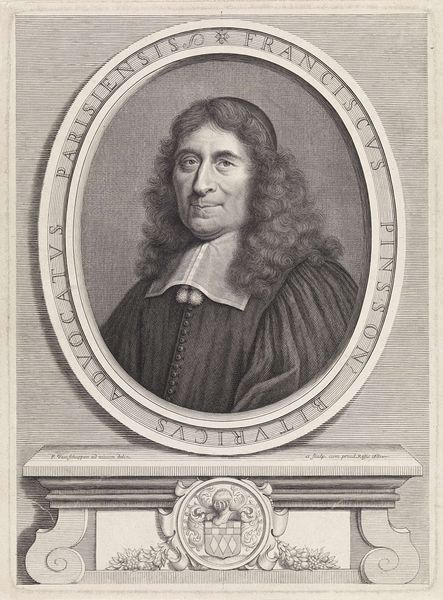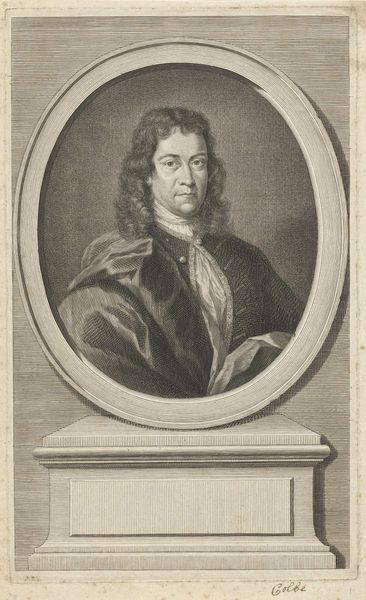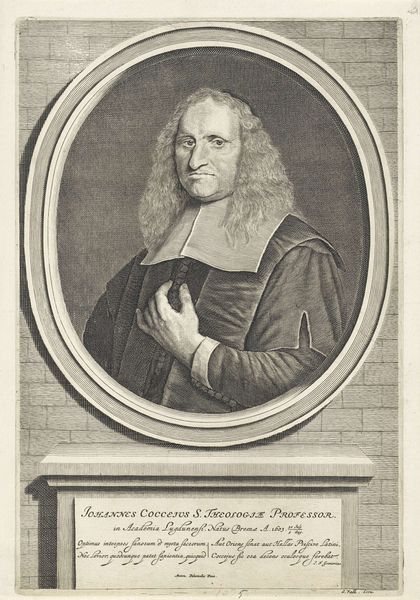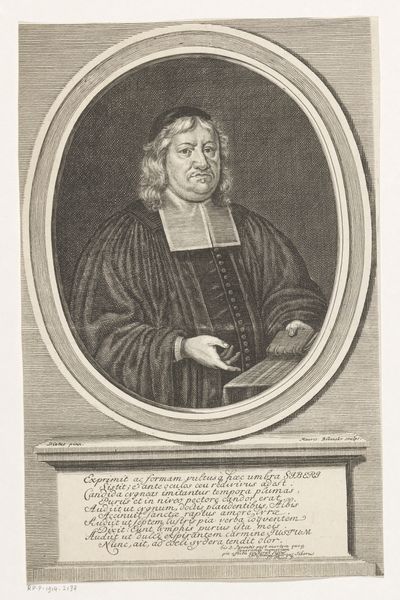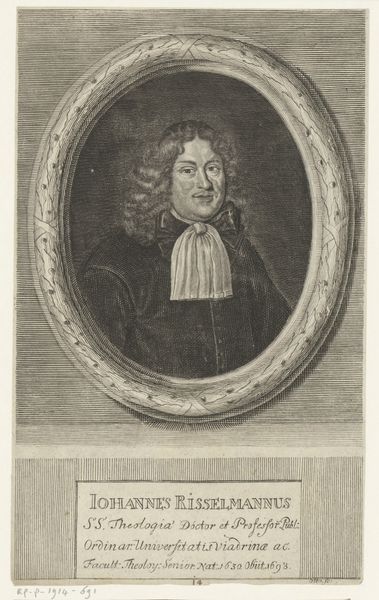
drawing, engraving
#
portrait
#
drawing
#
baroque
#
historical photography
#
engraving
Dimensions: height 359 mm, width 245 mm
Copyright: Rijks Museum: Open Domain
Curator: Here we have "Portrait of Jan de Wys", an engraving housed right here at the Rijksmuseum, placing it within a significant lineage of Dutch portraiture. Dating between 1664 and 1721 and created by Jan van Munnickhuysen, this print gives us a window into the persona of Jan de Wys during that era. Editor: Immediately, I’m struck by the texture. Look at how meticulously each hair, each fold of fabric is rendered! The stark monochrome somehow makes him seem so real, like he could just step right out of that oval frame. Curator: Indeed. The oval frame itself is an important visual cue, isn't it? Such portraits often played a crucial role in constructing social identity and memorializing figures within specific networks of power. It gives him an air of distinction, a certain gravitas fitting of his time. Editor: Absolutely. The way he holds that small ornament—a symbol of office or accomplishment, perhaps? It feels significant. And I wonder, what was he really like? Did he have a sense of humor, or was he as serious as he appears? You know, portraiture can really make the past feel very tangible. Curator: I agree completely. We have to see beyond the visual representation. Think of the printmaking process. It involves intermediaries: the artist who designs it and the printmaker, here Jan van Munnickhuysen, who realizes it. That collaborative process can subtly influence our reading, framing Jan de Wys within a web of artistic and social intentions. Editor: I think I got it: It’s more than just a likeness; it's a whole story, not just about Jan de Wys, but also about the time, its processes, the artist, all woven together. Curator: Precisely! And the very fact that the Rijksmuseum preserves and presents this portrait reflects its ongoing value in our understanding of Dutch history and culture. Editor: Well, I can't deny that after dissecting that and after looking deeper into the details, the more interesting "Portrait of Jan de Wys" gets, you see. Curator: Yes, engaging with its layered historical context adds richness and complexity to what may initially appear to be a simple depiction.
Comments
No comments
Be the first to comment and join the conversation on the ultimate creative platform.
